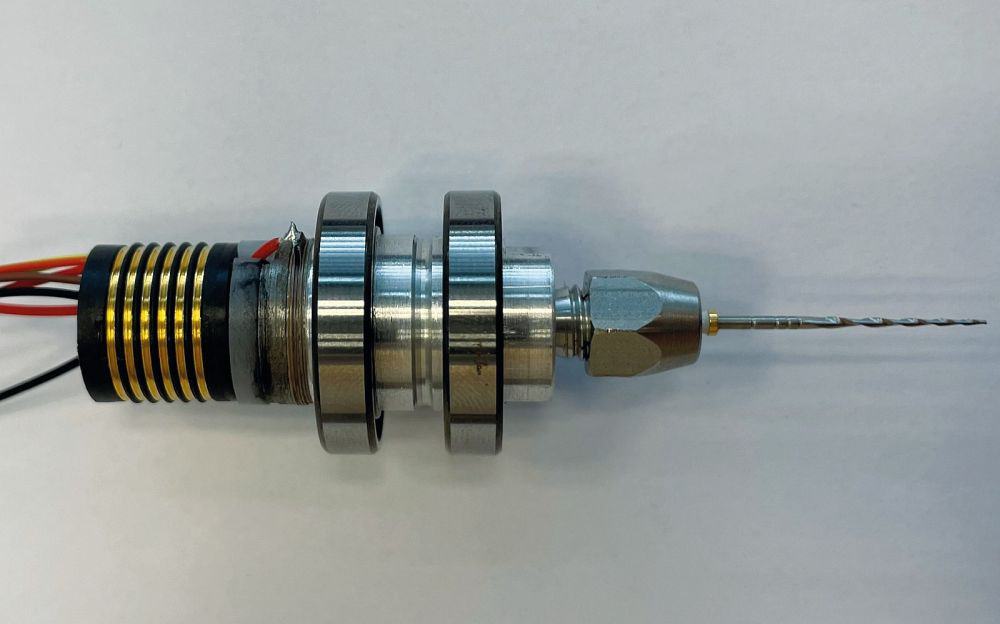
[Image above] An example of a conventional rotary file integrated with the piezoceramic stack actuator developed at Fraunhofer IKTS. Credit: Fraunhofer IKTS
Root canals are one of the most dreaded dental procedures because of their reputation for being extremely painful. But this treatment, which is used to remove inflamed or infected pulp (soft tissue) on the inside of a tooth, should be no more painful than getting a filling thanks to advancements in medical technology.
During the multistep procedure, which is illustrated in the video below, dentists use a small, rotating file to extract the damaged pulp from the tooth’s root canal. The rotary file must be periodically removed and cleaned because the pulp will eventually build up on the tool and jam its rotation.
Lasers can be used instead of rotary files to remove the damaged pulp, thus circumventing the jamming problem while providing enhanced disinfection. However, lasers will not work if the tooth already has a filling or too much decay. So, there remains a need to develop new rotary files that do not jam as easily.
In November 2023, researchers at Fraunhofer Institute for Ceramic Technologies and Systems IKTS in Germany announced their solution to the jamming problem: a file that features both rotational and vibrational motion.
In a press release on the invention, the researchers credit the idea of combining these two types of motion to specialists at the Department of Dentistry at the Rostock University Medical Center.
To realize this idea, the researchers developed a piezoceramic stack actuator that integrates with a conventional nickel-titanium alloy rotary file. The actuator overlays the rotating motion of the file with axial vibration, which in theory should prevent the file from getting clogged with tissue as quickly.
The press release reports that dentists at the Rostock University Medical Center successfully trialed the technology on artificial teeth. They completed the root canal procedures more quickly due to fewer required cleaning stops.
In addition to operational benefits, the piezoceramic stack actuator was constructed from lead-free materials, which “fulfills future requirements of the European RoHs [Restriction of Hazardous Substances] Directive,” the press release says.
Learn more about this invention and contact the researchers on the Fraunhofer IKTS website.
